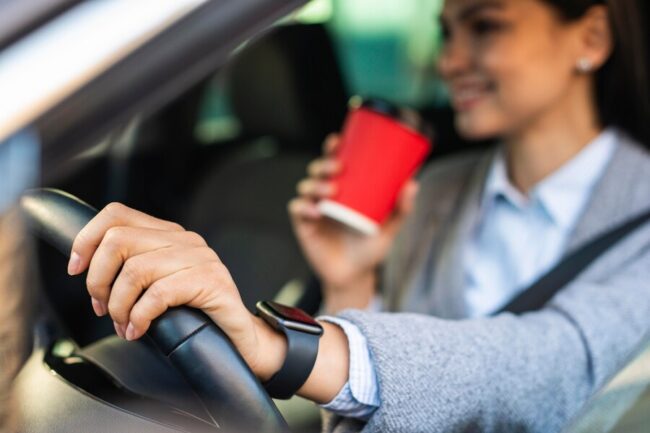As you slide into your car on a scorching summer day, the last thing you want is to be greeted by a blast of heat that turns your vehicle into a sauna. The culprit behind this uncomfortable scenario? Infrared radiation, or IR, can penetrate your car’s windows and raise the interior temperature to uncomfortable levels.
Infrared rejection, often abbreviated as IRR, solves this problem. By incorporating window tint films with high IRR properties, you can significantly reduce the amount of infrared radiation that enters your car, keeping the interior cooler and more comfortable even on the hottest days.
In this blog, we’ll explore the concept of infrared rejection in detail, understanding how it works, its impact on car interiors, and its benefits. We’ll also delve into how to choose the right window tint for optimal infrared rejection and how to ensure its effective installation and maintenance.
Understanding Infrared Radiation
Understanding infrared radiation is crucial for grasping its impact on various aspects of our daily lives, including its effects on car interiors. Infrared radiation, often called IR radiation, is part of the electromagnetic spectrum between visible light and microwaves. Unlike visible light, which our eyes can perceive, IR radiation is invisible to the human eye but can be felt as heat. All objects emit it with a temperature above absolute zero, including the sun, a primary IR radiation source.
In car interiors, IR radiation can penetrate windows and heat the interior, leading to discomfort and potential damage to upholstery and dashboard materials. Understanding how IR radiation behaves and interacts with window tinting materials is essential for effectively managing its impact and enhancing vehicle comfort.
 The Impact Of Infrared Radiation On Car Interiors
The Impact Of Infrared Radiation On Car Interiors
The impact of infrared (IR) radiation on car interiors can be significant, especially in warmer climates or during sunny days. IR radiation, which is invisible to the human eye, can penetrate car windows and heat the interior, leading to uncomfortable temperatures inside the vehicle. This heat buildup can make driving unpleasant, especially for passengers in direct sunlight.
Additionally, prolonged exposure to IR radiation can contribute to the fading and deterioration of upholstery, dashboard materials, and other interior surfaces. This not only affects the aesthetics of the car but also reduces its resale value. Therefore, controlling IR radiation through window tinting with high infrared rejection properties is crucial for maintaining a comfortable and well-protected car interior.
The Role Of Infrared Rejection In Window Tinting
Infrared rejection (IRR) in window tinting is crucial for maintaining a comfortable and protected environment inside your car. Window tint films with high IRR properties are designed to block and reflect infrared radiation, which is responsible for heat buildup inside the vehicle.
By effectively reducing IR radiation, these films help to keep the interior cooler, even in sunny conditions, minimizing the need for excessive air conditioning. Additionally, IRR plays a significant role in protecting car interiors from the damaging effects of IR radiation, such as fading upholstery and dashboard materials. Overall, IRR in window tinting enhances comfort and contributes to the long-term preservation of your car’s interior.
- Infrared rejection (IRR) in window tinting refers to the ability of the tint film to block and reflect infrared radiation, which is responsible for heat buildup inside the car.
- High IRR properties in window tint films help reduce heat transfer into the car, leading to a cooler interior temperature and increased comfort for occupants.
- IRR is an essential factor in controlling car energy consumption, as it reduces the need for air conditioning to maintain a comfortable temperature, thereby improving fuel efficiency.
- Window tint films with high IRR can also protect car interiors from fading, cracking, and other damage caused by prolonged exposure to infrared radiation.
- IRR is typically measured as a percentage, indicating the amount of infrared radiation blocked or reflected by the tint film. Higher percentages indicate more excellent IRR capabilities.
- When choosing a window tinting for your car, considering the IRR rating of the film can help you select the right product to suit your comfort and protection needs.
Benefits Of Infrared Rejection In Window Tinting
Infrared rejection (IRR) in window tinting offers a range of benefits that significantly enhance the comfort and protection of your vehicle’s interior. By blocking and reflecting infrared radiation, high-quality window tint films with effective IRR properties help maintain cooler temperatures inside the car, reducing the need for excessive air conditioning and improving fuel efficiency.
This enhances driving comfort and contributes to a more sustainable and eco-friendly driving experience. Additionally, IRR helps protect your car’s interior from the harmful effects of IR radiation, such as fading and deterioration of upholstery, dashboard materials, and other surfaces. This preservation of interior aesthetics and functionality ensures that your vehicle maintains its value and appeal over time.
- Enhanced Comfort: Window tint films with high infrared rejection (IRR) properties can significantly reduce the heat entering the car, creating a more comfortable interior environment, especially in hot climates.
- Temperature Regulation: By blocking infrared radiation, IRR window tint helps maintain cooler temperatures inside the car, reducing the need for excessive air conditioning and improving fuel efficiency.
- UV Protection: Many IRR window tint films also offer protection against ultraviolet (UV) radiation, which can cause skin damage and fade interior upholstery and dashboard materials.
- Glare Reduction: IRR window tint reduces glare from sunlight, enhancing visibility and safety while driving.
- Preservation of Interior: By blocking IR radiation, IRR window tint helps protect the car’s interior from fading, cracking, and deterioration caused by heat and UV exposure, prolonging the life of upholstery and dashboard materials.
- Energy Efficiency: The reduced need for air conditioning due to IRR window tint can lead to energy savings and lower carbon emissions, contributing to environmental sustainability.
 Choosing the Right Window Tint for Infrared Rejection
Choosing the Right Window Tint for Infrared Rejection
Choosing the right window tint for infrared rejection involves considering several key factors to ensure optimal performance. Firstly, look for window tint films explicitly mentioning infrared rejection (IRR) in their specifications. These films are designed to block and reflect a significant portion of infrared radiation, helping to keep your car interior cooler and more comfortable.
Additionally, consider the darkness of the tint, as darker tints generally offer higher levels of infrared rejection. However, it’s important to check local regulations regarding tint darkness, as your area may have legal limits. Some window tint films also offer additional features like UV protection and glare reduction, which can complement the infrared rejection properties for a comprehensive solution.
Finally, choose a reputable brand known for its quality and durability, ensuring that your chosen window tint will provide long-lasting infrared rejection performance.
- Research Different Window Tint Brands: Look into various window tint brands known for their high infrared rejection (IRR) capabilities. Brands with a reputation for quality and performance are a good starting point.
- Check IRR Ratings: Pay attention to the IRR ratings of different window tint films. Look for films with high IRR percentages, indicating their ability to effectively block and reflect infrared radiation.
- Consider Legal Regulations: Check local regulations regarding window tint darkness and IRR requirements. Ensure that the window tint you choose complies with these regulations to avoid legal issues.
- Evaluate Additional Features: Some window tint films offer additional features like UV protection and glare reduction. Consider whether these features align with your needs and preferences.
- Review Customer Feedback: Read reviews and feedback from other car owners who have installed the window tint you’re considering. Their experiences can provide valuable insights into the performance and durability of the tint.
- Consult Professionals: If you need clarification on which window tint to choose, consult with professionals or experienced installers. They can recommend the best options based on your specific requirements and budget.
Installation And Maintenance Of Infrared-Rejection Window Tint
Proper installation of infrared-rejection window tint is crucial to ensure its effectiveness in blocking infrared radiation and maintaining its performance over time. It’s recommended to have the tint installed by professionals with experience with window tinting to ensure a seamless application without bubbles or creases. Before installation, the windows should be cleaned to remove any dirt or debris affecting the tint’s adhesion.
After installation, it’s essential to allow the tint to cure fully before rolling down the windows or cleaning them. Regular maintenance involves gentle cleaning with a mild soap and water solution and a soft cloth to avoid scratching the tint. Avoid using harsh chemicals or abrasive materials that could damage the tint. With proper installation and maintenance, infrared-rejection window tints can provide long-lasting protection and comfort inside your car.
Conclusion
Infrared rejection is more than just a shield against heat—it’s a pathway to a more enjoyable driving experience. By opting for window tint films with high infrared rejection properties, you can maintain a comfortable interior temperature without relying heavily on air conditioning. This not only improves comfort but also protects your car’s interior from fading and deterioration.
When choosing window tint, consider its infrared rejection capabilities along with other factors like UV protection and glare reduction. With infrared rejection, you can enjoy a cooler, more comfortable ride, no matter the weather.




